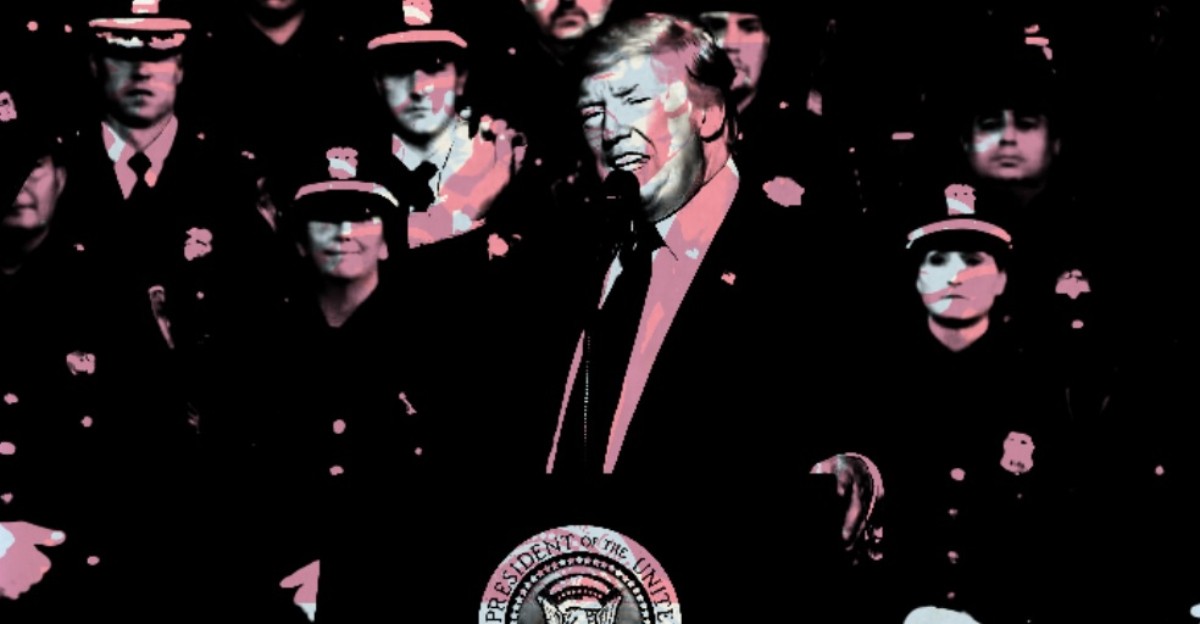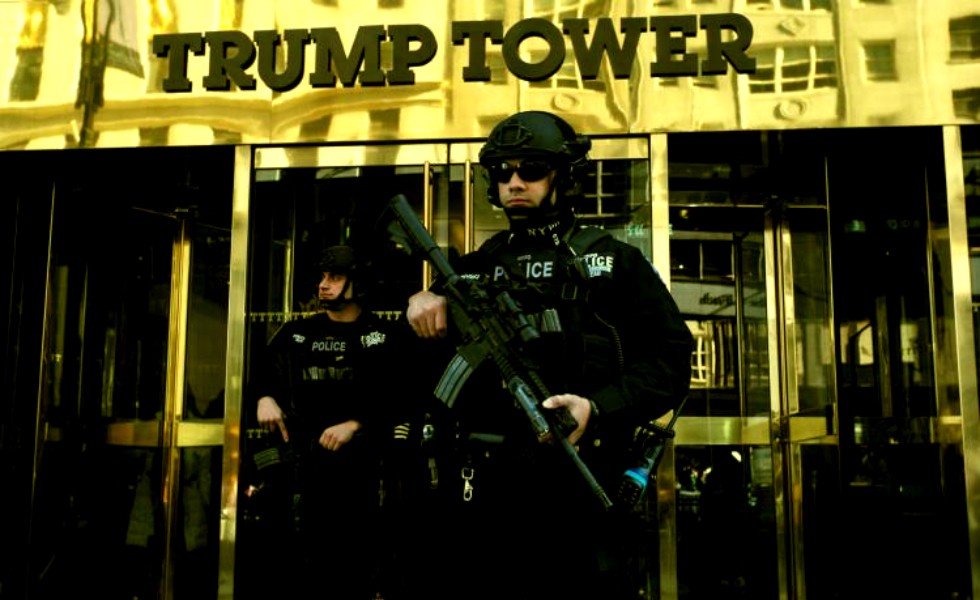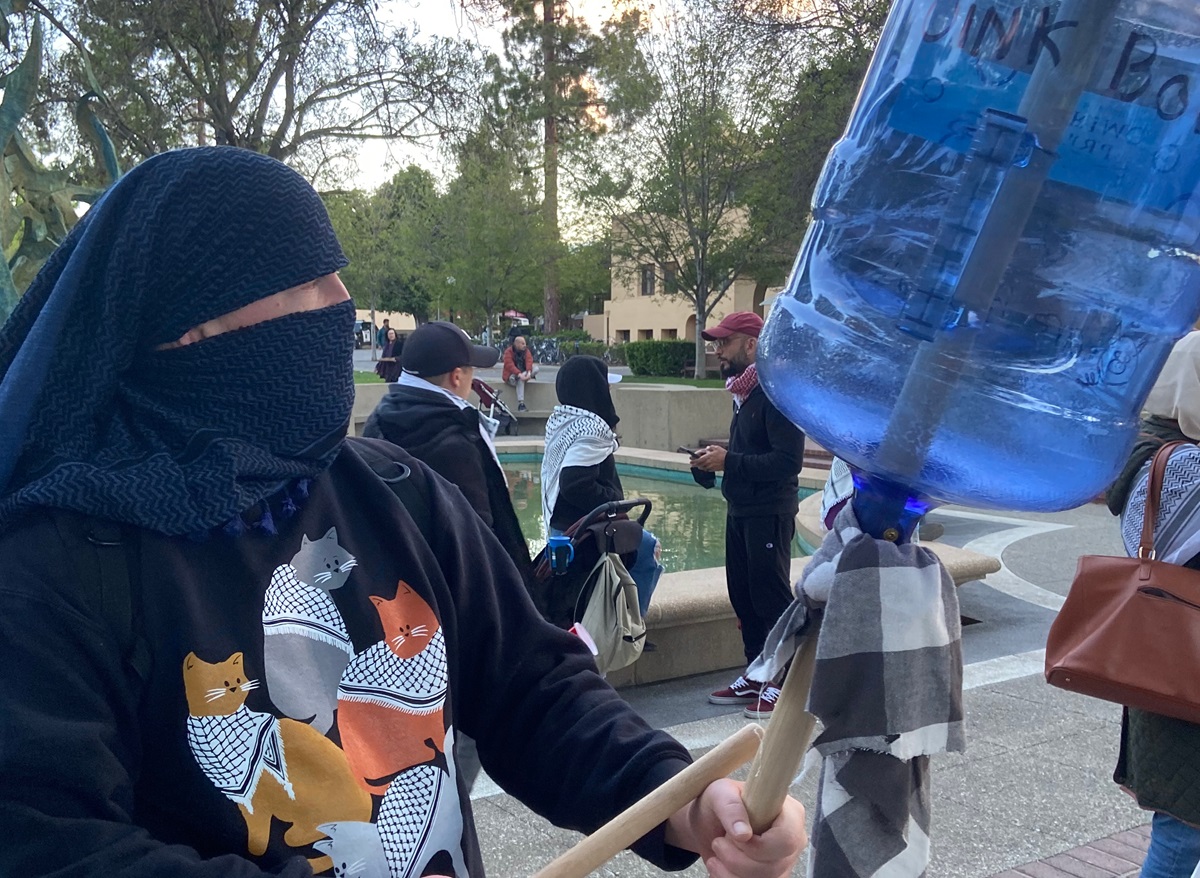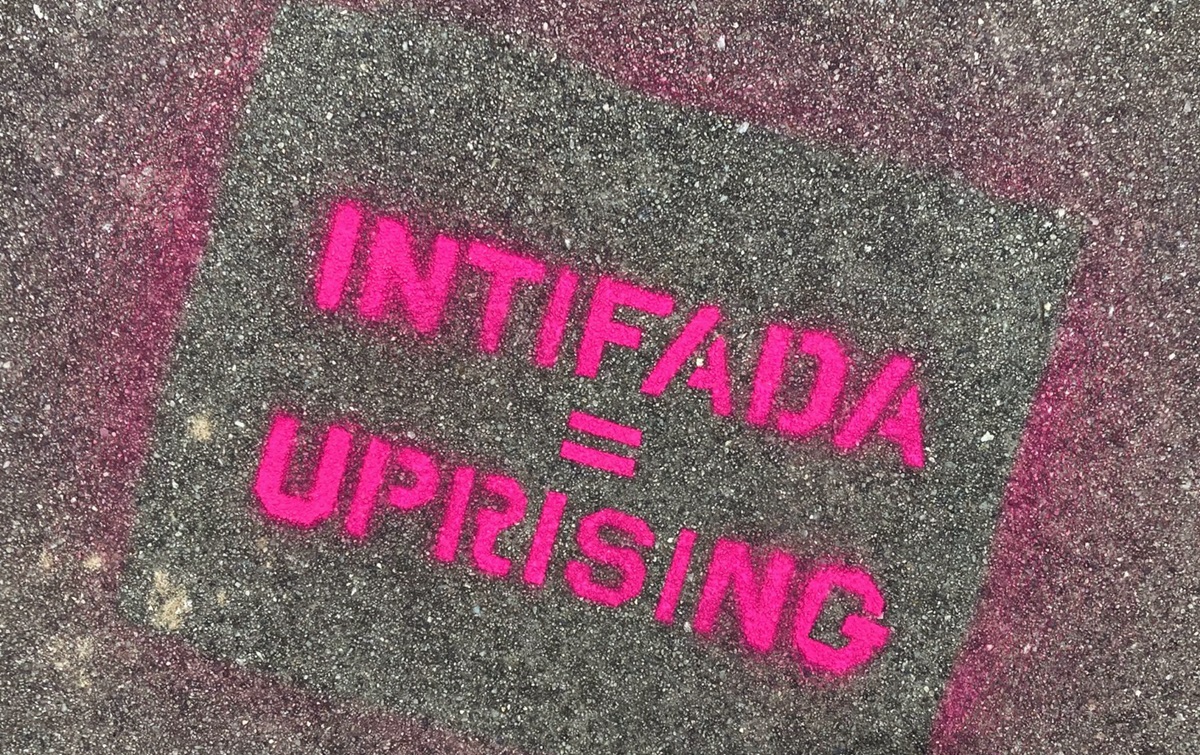Filed under: Analysis, Community Organizing, Featured, Repression, The State, US

There is a growing consensus across mainstream political and media circles that Trump will contest the upcoming 2020 election and throw the United States into a Constitutional – and potentially violent crisis – in order to hold on to power.
But what does this potential chaos mean for working-class and poor communities? While non-profits and organizations tied to the Democratic Party are already organizing, what do everyday people do in the face of such uncertainty? The following editorial offers some ideas as to what we may expect to see play out over the coming weeks and months.
It has become increasingly clear, even to the ruling elite, that the November election will present the American political system with its most serious crisis in well over a century. The choices presented―Donald Trump and his fascist clique versus right-wing neoliberal Joe Biden―offer essentially nothing to either autonomous social movements or the working-class caught up in the hellscape that is 2020. Nevertheless, this spat between two factions of billionaires threatens to devolve into a blood feud. In this environment, people must be organized to keep themselves and their communities safe from both the looming threat of dictatorship and paramilitary violence.
Why so dire? The 2020 election takes place under conditions that have not been seen in the modern era. The COVID-19 pandemic requires the widespread use of mail-in voting in a country that expects to know the winner by the end of election night. The Trump administration and its allies have taken shockingly open steps to suppress turnout, including attacks on the Post Office and the widespread closing of polling places. Hardline allies like Roger Stone have called for a crackdown on voting to prevent Democrats from “stealing the election.” These actions have sewn widespread doubt on both sides that there will be a fair election. No matter the apparent outcome on election night, there is a significant portion of both the Democratic and Republican bases that will not accept the results as legitimate.
These actions have sewn widespread doubt on both sides that there will be a fair election. No matter the apparent outcome on election night, there is a significant portion of both the Democratic and Republican bases that will not accept the results as legitimate.
In this article, we will assume that the election will be contested. It is possible, but not likely, that there will be a peaceful transition of power―if that occurs, people will be able to shift focus. For our purposes, we will first examine the forces gathering for this contest, including institutional Republicans and Democrats, right-wing paramilitaries, and the wider Left and working-class as a whole. We will then discuss what a prolonged contested election could look like in broad terms. Finally, we will explore how people might begin to organize themselves in order to safeguard their communities in the coming maelstrom.
The Balance of Forces

The polarization and fragmentation of American society means that mapping the participants in a contested election is quite messy. For simplicity, we will break actors into three rough groupings: pro-Trump, anti-Trump, and Fence Sitters. Within each group, there are institutional actors―government officials, politicians, NGOs, and corporations―and non-institutional actors. The fact that there are no clean lines of communication between the sub-groups within each faction, and that these sub-groups are often rivals of one another in ‘normal’ times, adds an element of chaos to our expected scenario.
The prospective pro-Trump forces are:
- The Department of Homeland Security (including CBP and ICE) and the Department of Justice (including the U.S. Marshals and the Bureau of Prisons), which are controlled by loyal appointees.
- The majority of the Republican Party and its state branches, which will remain loyal to Trump.
- Certain sections of the Department of Defense, if appointees remain loyal to Trump rather than top brass.
- Local police, where they feel capable of supporting the Trump administration without massive retaliation.
- Allied media outlets like Fox News, Breitbart, and InfoWars.
- Far-right groups and militias like the Proud Boys, 3%ers, etc., along with local militias organized on an ad hoc basis (as we have seen in the Oregon panic).
The prospective anti-Trump forces are:
- The incoming Biden administration and the Democratic Party. This includes mayors and local officials in Democrat-controlled cities like New York, LA, DC, etc.
- Sections of the bureaucracy that can be mobilized against the administration by the Democratic Party.
- Portions of Wall Street and Silicon Valley that have supported the Biden campaign.
- The non-profit industrial complex: MoveOn, Indivisible, Color of Change, etc.
- Unions: The SEIU, AFT, etc.
- Allied media outlets like MSNBC, CNN, the New York Times, and the Washington Post.
- The autonomous anti-capitalist social movements, left-wing activist groups, and working-class people drawn into the action by the crisis.
Finally, the expected Fence Sitters are:
- Most of the military. (Pentagon leaders have repeatedly emphasized that they will not intervene in favor of either side in a contested election.)
- Most of the American population. (While many people will no doubt have sympathies with one side or another, and these sympathies matter, most will not play an active role in the clashes that determine the outcome of the election.)
There are some key takeaways from this. Trump’s boots-on-the-ground support is highly concentrated in two sectors: federal internal security forces and right-wing paramilitaries. By contrast, the anti-Trump coalition is more diffuse, suffering from the fact that the DNC does not currently control the executive branch. Many of the sub-groups in the anti-Trump coalition do not play well with one another―the non-institutional Left is otherwise outright opposed to the Democratic establishment and its base of support. As expected, Trump’s base of support is more rural and suburban, while the anti-Trump coalition is more urban.
Trump’s boots-on-the-ground support is highly concentrated in two sectors: federal internal security forces and right-wing paramilitaries.
Regarding the Fence Sitters, we should hope that military leaders are able to retain their neutrality. There is no positive result in the long run, from the U.S. military taking a more active role in domestic politics. It is also entirely possible that certain units will be activated while others remain in the barracks. Republican governors could call up their National Guard units to crack down on protests; Democratic governors are less likely to do the same; while some National Guard members might even go AWOL.
What a Contested Election Looks Like
This election will look little like what we’ve become used to in recent years. Long lines at polling places, widespread challenges to voters, disastrous delays for mail-in ballots, and outright voter intimidation in some areas are all likely, and that’s just on day one. By the end of election night, we will have a largely incomplete picture of who may ultimately win, though both parties will already have begun putting their spin on the results. Trump will likely declare victory by the end of the first night. As in 2016, the first protests may also begin on election night.
There are a number of scenarios that could slightly alter what a contested election looks like. (In brief: Biden landslide; Biden narrow victory; Biden wins popular vote but loses the electoral college; Trump narrow victory; Trump landslide.) In the highly unlikely case that Trump wins re-election in a landslide, for instance, institutional Democrats would not put up much resistance. The reality, however, is that most scenarios involve both sides accusing the other of attempting to steal the election.
The days to follow will be a disorienting whirlwind of action. Both sides will file legal challenges, competing politicians will make threats and statements of support, federal forces may seize ballots in key areas, non-profits and unions will call for non-violent protests, and right-wing militias will mobilize based on paranoid rumors about ‘antifascist rioters.’ Mass media will blast out often-contradictory information round the clock. As protests heat up, hot spots like Portland and smaller towns and cities will see confrontations between right-wing and left-wing demonstrators. All this will occur alongside the usual high levels of police violence and repression.
We should prepare to do two main things: Secure our local communities from State and vigilante attacks, and exert popular power to remove Trump from office, should he lose the election and refuse to leave.
Recent news stories about the Democratic establishment’s planned response to a contested election give little reason for hope. The DNC plan relies largely on legal challenges and non-violent protest led by the non-profits―a feckless strategy that recalls their defeat in 2000. The law means little if your opponent can exert control over one of the most unchecked executive systems on the planet. To quote a friend, “there is no law, only enforcement.” The Biden campaign and the non-profits will attempt to muzzle popular outrage, playing up respectability politics out of fear of ceding the big cities to the Left. It seems unlikely that this will have more than mixed success, but people should prepare to rebut the same type of liberal conspiracy theories that plagued the June protests.
Therefore, the Trump administration and the Right will be mostly responsible for determining how quickly and how far the crisis escalates. Where federal forces are deployed, the tactics they use, and how visibly they interfere in vote counting will all contribute to the feeling of a looming dictatorship.
A sweeping crackdown would require far more manpower than that available within the DHS (60,000) and the DoJ (less than 5,000), requiring the activation of National Guard units and the cooperation of local police. If the Trump administration ends up short on loyal forces, it is entirely possible that it will concentrate those forces in DC to guard the White House, as we saw in June. This would see the Right relying on a patchwork of paramilitaries elsewhere, who would be vastly outnumbered in urban areas, while people out in the streets protesting Trump in DC would face an uphill battle.
Rhetoric is also important. If Trump pretends to go along with the legal fight, protests will escalate less than if he openly and brazenly calls for paramilitary violence.
The Trump administration and the Right will be mostly responsible for determining how quickly and how far the crisis escalates. Where federal forces are deployed, the tactics they use, and how visibly they interfere in vote counting will all contribute to the feeling of a looming dictatorship.
It is important to remember that this process could play out for weeks or even months, perhaps up to and through January, when Trump dramatically and predictably refuses to leave the White House. The long period between the election and the inauguration creates a huge window for the spread of disinformation, conspiracy theories, violence, and media spin, all of which will cement the political allegiances of both pro- and anti-Trump forces. In short, we are heading into a potentially very dangerous period.
Preparing for the Coming Storm
What are our objectives? At a minimum, people need to protect themselves and their communities from the violence of both the State and paramilitaries. It is obvious that Trump managing to stay in power poses a serious threat to many, as the summer crackdown on even mild forms of resistance has shown. Fighting against a dictatorship is not the same thing as fighting for Joe Biden―even if Trump leaves office, we will still have an enemy in the White House. We should therefore prepare to do two main things: 1. Secure our local communities from State and vigilante attacks, and 2. Exert popular power to remove Trump from office, should he lose the election and refuse to leave.
The period between the election and the inauguration creates a huge window for the spread of disinformation, conspiracy theories, violence, and spin, all of which will cement the political allegiances of both pro- and anti-Trump forces. In short, we are heading into a very dangerous period.
People need to start by planning now how their communities will respond during the electoral crisis. It is crucial to think about strategy before the chaos and confusion of November takes hold. Running a simulation―or “wargame”―offers an opportunity to explore how people and their opponents will respond to a crisis scenario. Gather your group, either virtually or in a safe in-person setting, and choose players to represent the different factions in your area. The more players you have, the more you can represent the different sub-groups within each faction. One or two participants will need to serve as neutral referees to run the simulation and determine the results of each attempted action. You should overweight the number of players for the non-institutional opposition, as that is the role communities will fill come November. Encourage the players to research the ideology and objectives of the group they represent, assuming they have the time.
There are some key scenarios and issues you can explore in these simulations. If you have limited time, you should explore the most difficult scenario―a general crackdown―as it will prepare you for other scenarios as well.
Scenarios:
- General Crackdown: Federal police and/or National Guard, right-wing paramilitaries, and local police are attempting a crackdown in your area. How do people respond?
- Limited Crackdown: There are limited federal forces available in your area (unless you live in DC), but local police and/or right-wing paramilitaries are attempting a crackdown in your area. How do people respond?
- State Withdrawal: Federal police, the armed forces, and local police are leaving your area more-or-less alone. Paramilitaries may or may not be present. What challenges remain in terms of providing for your community and keeping it safe?
Issues to Explore:
- What resources do people have at their disposal? How many people can be mobilized to demonstrate, to provide aid, and to provide security? Are there resources folks would need, but do not currently have?
- What can communities do collectively that is the most effective?
- What allies can people call upon, locally and regionally? Are people’s lines of communication clear and effective? Do people have links to workers and unions who can strike? Are there individuals and groups―friends and family, non-political church groups, etc.―who people might be able to reach out to in a crisis? Do folks have existing relationships with these people, or do they need to start talking to them?
- Where is power in the community concentrated? What about those organizing to potentially physically harm others?
- What areas of conflict are likely to emerge within community coalitions? How can people work through or pre-empt these issues without splintering broad based organizing?
- What do people have at their disposal to keep vulnerable people safe and potentially get folks out of dangerous areas?
- How would communities begin to organize to make decisions and meet their own needs directly, if it became necessary? How would folks maintain the flow and distribution of food, water, and other necessary resources?
Whether or not people have the capacity to run a simulation, communities must plan for a crisis ahead of time. To use a cliché: failing to plan is planning to fail. Developing a basic game plan is absolutely crucial, as is reaching out to your community ahead of time and developing clear lines of communication.
Having a plan means that people will be able to lend forethought and expertise to the many new and often-confused people who will mobilize in response to the crisis. People’s plans must include systematic ways of reaching out to new folks, incorporating them into community mobilizations, and teaching them the skills they will need. While the election crisis itself may not provoke either a dictatorship or a revolution, the connections made in this moment could sew the seeds for what is to come: both in terms of liberation and reaction.
If Trump’s efforts to steal the election work, we will be urged not to “politicize” the process, to wait patiently and to not “prejudge the results.” We need to ignore such advice and take to the streets, write Frances Fox Piven and Deepak Bhargava. https://t.co/K34NcbYo6P
— The Intercept (@theintercept) August 12, 2020
Lastly, despite the violent fantasies of the fascist Right, the main form of unrest unleashed by Trump’s chaos will most likely (and hopefully) not be armed. That said, people will need to have the capacity to defend themselves if right-wing violence such as shootings and car attacks becomes widespread and moreover, increasingly encouraged by the State.
While humanity faces an immense challenge, this is no time to give into despair. Millions upon millions of people took part in the largest anti-racist protests in U.S. history this year―many of these same people will come together in the face of the coming crisis. The multi-racial working class vastly outnumbers its enemies – but it needs planning, coordination, and the determination to protect itself. Thanks to the growing wave of autonomous social movements, communities across the US have a high number of experienced organizers and protestors; more so than at any time in the past fifty years. People can win, if they go into this crisis organized and working to build the foundations of a new world: not just a world without this dictatorship, but a world where people are free from the barbarism of this entire system.





